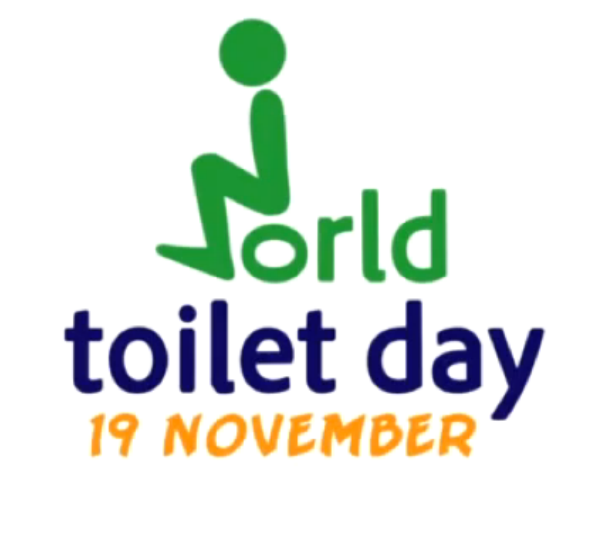big orange bike, September 17, 2018
A debate has been heating up in recent months here in Ottawa about a proposal for a woman’s bureau. This office would try to make sure that Ottawa’s women were being well-served by their city and would try to eliminate unconscious bias in providing these services.
The mayor, Jim Watson, rejected this idea, saying that for him to endorse it would count as a conflict of interest. On many levels this is total rubbish. He remains reluctant to engage on gender issues in the current election campaign.
Leaving the debate aside, however, let’s consider what examining a city project through a gender lens might mean.
The big project in Ottawa these days is the LRT, now regrettably quite behind schedule. The city is building track and stations. According to the website, four of the stations, Tunney’s Pasture, Bayview, Hurdman and Blair will have public toilets. Nine stations will not.
Let’s look at the need for bathrooms while travelling on public transit through a gender lens. Women’s bodies function differently than men’s. The first of these differences is menstruation. When women need to change a pad or a tampon or a Diva cup, they do so in a washroom. This can be a messy process. It needs to be done in private and women need to wash their hands afterwards. If this process is delayed, women can get blood on their clothes. This is embarrassing and diminishes their dignity. If the city cared about the dignity of women on public transit, it would provide washrooms for this function. It might even propose a pilot project in which waste-free menstrual products were made available in these washrooms for free, in collaboration with Public Health and the Ministry of the Environment.
The second difference is that women’s bodies can be pregnant. Pregnant bodies need to pee more often than non-pregnant bodies, whether because of hormones or because the fetus is pressing on the bladder. This need can be urgent and come without much warning. Pregnant bodies also may need to vomit. This can happen during the first three months or for those lucky ones like me, throughout the entire pregnancy. This need can also come without much warning. If no washroom is available, the woman may need to vomit into a garbage can, or into her scarf (not my favourite memory). A city that cared about the comfort and dignity of pregnant women on public transit would provide washrooms.
Women’s role in society is also different from men’s. Women are still overwhelmingly the primary caregiver in households with children. Primary caregivers travelling on public transit with children are not just concerned with their own bodily functions. They are also responsible for those of accompanying children. Picture a woman waiting at a station without washrooms for a bus that never seems to come. She has a baby in a sling on her front and a toddler in a stroller. The toddler has been doing well with toilet-training and the woman thought there would be enough time to get home before the next trip to the potty. The non-existent bus has confounded these expectations and now the toddler really has to go. There is no toilet at the station. The toddler has to pee her pants. Her dignity suffers and so does that of her mum, who then has to get on the bus with a pee-smelling child.
Now consider the baby on her front. Babies eliminate waste to no known schedule, and that baby, after not having a poo for 2 days, unleashes poomageddon inside the baby sling. There is no washroom. There are no facilities for changing a baby. The woman can open the diaper bag and try to clean up the baby on the changing pad while kneeling on the ground. She is hoping desperately that everyone around her does not peer down and make disgusted noises at all that poo. Since there’s no washroom, there’s no running water with which to rinse out the sling or the woman’s shirt. She’s not about to take off her shirt and try to rinse it out on the platform with the water from the toddler’s water bottle. Baby and mummy stay poopy until they reach the refuge of home. Mum vows never to take the bus until the children are older than 5.
Picture a less apocalyptic scenario. We’re still waiting for a bus at a station and both toddler and baby are mercifully free of pee and poo crises. The baby starts to fuss because he’s hungry. Mum had timed the trip to get them home before she calculated he would be hungry again, but you know, the bus. It’s -15 and everyone is bundled up. She tried to placate the baby but he isn’t having any. People are starting to stare. She takes off the sling, undoes the nursing bra, pulls up her shirt and nurses the baby standing up at the bus stop. If you’ve never nursed a baby outside during an Ottawa winter, let me assure you that it can be a very drafty experience. The bus finally comes. The baby falls asleep in the sling on the bus and then wakes up when his mum tries to put him in bed at home. Baby has no nap that day. Mum vows never to take the bus until after her children have stopped napping.
A city that cared about the dignity and comfort of women and children on public transit would provide washrooms. It might even provide a family washroom in which the woman could strip down that poopy baby, wash him down and dress him in the spare outfit that she kept in the diaper bag. The Museum of Nature does. I know this, because I was able to take toddler and poopy baby into a private space without worrying that the toddler was going to stick his head under all the stall doors while I washed the baby. Mercifully in that instance the stroller bore the brunt of the onslaught so that I didn’t actually have to undress.
That city, moreover, might provide a family area where a woman could nurse her baby in comfort. She’s got time: after all, she is waiting for the bus.
This list of imaginary women could go on and on: the woman with a urinary tract infection who has to pee NOW; the woman suffering from Crohn’s disease; the plain old woman who doesn’t have her period, is in good health and is not travelling with children. But she just has to pee.
These washrooms that all these imaginary women need for their comfort and dignity are of course not just for their own use. Although the decision to provide washrooms might be informed by a gender lens, those washrooms will be no less useful to male users of public transit. The city could plan for the vulnerable and make the city accessible to all.
There are thousands of decisions that are taken by city staff and elected officials every day that might look different through a gender lens. A women’s bureau could make sure that this lens is used. For the mayor not to engage on issues of gender is to say that the realities of women’s lives do not matter.



